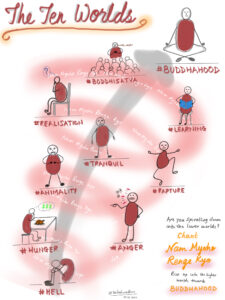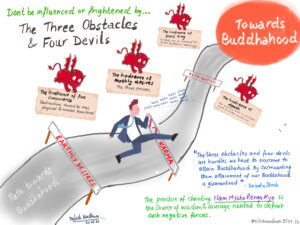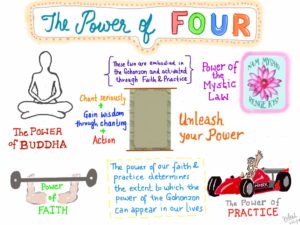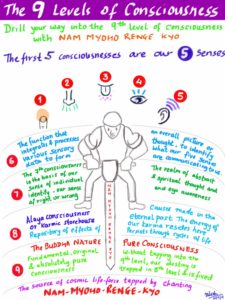Nichiren Buddhism, a school of Mahayana Buddhism founded by the 13th-century Japanese monk Nichiren Daishonin, places great emphasis on the power of prayer as a means of self-transformation and enlightenment. Unlike prayer in many religious traditions, which often involves asking for divine intervention, prayer in Nichiren Buddhism is an active practice rooted in personal determination, self-reflection, and action.
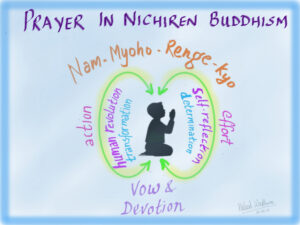
Nam-Myoho-Renge-Kyo: The Essence of Prayer
At the core of Nichiren Buddhist prayer is the chanting of “Nam-Myoho-Renge-Kyo,” a phrase that encapsulates the essence of the Lotus Sutra. This chant is not merely a recitation but a profound expression of devotion and a vow to embody the teachings of the Buddha in everyday life. “Nam” signifies dedication, “Myoho” represents the mystic law of the universe, “Renge” symbolizes the simultaneity of cause and effect (like a lotus flower blooming amidst the mud), and “Kyo” denotes the eternal truth of the Buddha’s teachings.
The Cycle of Transformation
Prayer in Nichiren Buddhism is a cyclical process that fosters both inner and outer transformation.
It consists of key elements:
- Vow and Devotion– Making a conscious commitment to live with wisdom and compassion, aligning one’s actions with the principles of the Lotus Sutra.
- Self-Reflection and Determination– Using prayer as a tool for introspection, recognizing personal challenges, and renewing one’s resolve to overcome obstacles.
- Effort and Action– Prayer is not passive; it requires dedicated effort and concrete actions to manifest positive change.
- Human Revolution and Transformation– As individuals engage in prayer with sincerity, they undergo a process of inner growth, ultimately transforming their environment and contributing to the well-being of others.
The Practical Impact of Prayer
Nichiren Buddhism teaches that prayer has tangible effects, not because of supernatural intervention, but because it strengthens one’s determination, aligns thoughts with actions, and creates causes that lead to beneficial outcomes. It instills confidence, resilience, and clarity, enabling practitioners to face challenges with courage and wisdom.
Moreover, the concept of “oneness of self and environment” (esho funi) in Nichiren Buddhism suggests that by transforming oneself, one also transforms the surrounding world. This means that personal prayers and inner changes have a ripple effect, influencing society and creating a more harmonious world.
Conclusion
Prayer in Nichiren Buddhism is a powerful means of self-empowerment and spiritual awakening. It is not a plea for external salvation but a dynamic process of self-discovery, commitment, and action. Through chanting Nam-Myoho-Renge-Kyo with unwavering faith and determination, practitioners cultivate inner strength, transform adversity into opportunity, and contribute to a more compassionate and enlightened world.

